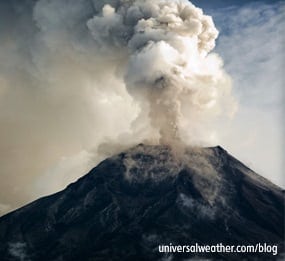6 Best Practices Used by Aviation Meteorologists for Pre-Flight Planning

This aviation blog post is part of series on aviation weather.
Given the availability of different online tools – including meteorological tools – operators have many options. In many cases, these tools provide sufficient information for crew members or aircraft dispatchers. However, for international trips, operators should consider using meteorologists, who offer benefits a do-it-yourself tool doesn’t. For example, a meteorologist can be contacted on short notice with questions about challenges such as impeding weather. He or she can also help plan your next trip by providing outlooks for your intended stops. And he or she can identify problems that might not be readily apparent to an operator. Below are six key components your aviation meteorologist uses to help you plan your trips:
1. Determining trip feasibility with preliminary weather briefings
Preliminary weather briefings – an important element in trip planning – are valuable for prediction purposes. These briefings are used to determine the feasibility of many different types of operations. They assist in planning ultra long-range missions, selecting tech stops and alternates and avoiding tropical weather systems. Your aviation meteorologist can give you an overview on destination weather issues and en-route weather problems, along with recommended options.
2. Using historical data in trip planning
Historical winds and climatology data are available for any location worldwide for any month of the year. Meteorologists can provide this information to operators upon request. This type of package usually includes Boeing winds data, as well as wind component and altitude data. Your meteorologist will use a full range of weather resources and, in conjunction with a professional flight planner, create test flight plans based on historical winds for trip-planning purposes.
3. Monitoring volcanic activity
Aviation meteorologists will use the latest volcanic activity information available to monitor how such activity can impact a flight. This information will include generated graphics and interpretation of volcanic databases on information received from different Volcanic Ash Advisory Centers. (There are nine of them.) When there is a volcanic observation available, meteorologists will use data produced by it to provide relevant and detailed information on volcanic ash cloud dispersion. Your meteorologist will create and send customized briefings to assist crews and ensure the proposed route avoids ash activity.
4. Creating custom vs. generic forecasts
Customized weather – as opposed to online services – is highly beneficial to both domestic and international operations. Full-service weather routinely includes advanced notification regarding inclement weather conditions that could jeopardize your flight, layover or technical stops. Custom forecasts for specific arrival and departure timeframes (for example, customized terminal aerodrome forecasts, not generic ones) can be forwarded via all means of communication upon request or along with your flight plan and weather package.
5. Referencing numerous weather information sources
Aviation meteorologists have available information from various meteorological services and sources to provide operators with the best possible briefings to support trip planning. They use numerous systems and resources to build detailed, accurate, trip-specific forecasts. These include weather models, radar and satellite imagery.
6. Being available 24/7
In a day and age where data is available through many technological avenues, having meteorologists available 24/7 is a great advantage. You’ll benefit when you have an experienced aviation meteorologist on the line that can answer questions and assist with planning and day-of-operations concerns. A larger weather department will have meteorologists with diverse educational backgrounds and expertise, coming from both military and academic schools of thought. Additionally, there are long-range forecasters that can provide early warnings about weather hazards for your important trip.
Questions?
If you have any questions about this article, contact me at stevearbogast@univ-wea.com.
Tomorrow we’ll cover best practices used by aviation meteorologists on the day of a flight.




